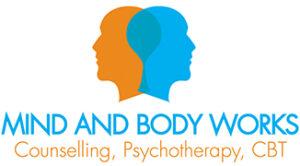When mental health Minister Kathleen Lynch got stuck in a lift with the Minister for Health James Reilly, she assured the media she was not stressed during it as she was practising her mindfulness. Was she in a state of profound calm or just trying to deny a mounting panic or discomfort?
And this is how mindfulness can be. It can be used and mis-used. Today it is a real buzz word and seen as the new answer to all ills. Vietnamese Zen monk, Thich Nhat Hanh, warns against this kind of mis-use in his writings on ‘the better way to catch a snake’. If we grab a snake by the tail or the body, it will bite, but if we use a fork at its head it is safer. Similarly if we approach mindfulness the wrong way we can get bitten.
The original practice of mindfulness is based on the Buddha’s teaching in the ‘Sattipathana Sutta’, or ‘The Great Discourse on the Establishment of Mindfulness’. In a nutshell, it is a balanced and relaxed observation of the processes of our body, our sensations in our body, our feelings and thoughts.
The clever thing about mindfulness is stepping back from ourselves and seeing the process of ourselves unfold. Like watching a river flowing or clouds drifting across the sky you see your body just as it is, seeing our thoughts and feelings just as thoughts and feelings…’this is a thought, this is a feeling’…seeing them arising, staying for a while and then subsiding. Seeing their changing nature we don’t get caught in them and can let them go.
However, this includes seeing and staying with the unpleasant feelings, thoughts and sensations which is a little more difficult. But watching them in the same way as the pleasant aspects of ourselves is also mindfulness. An old teacher realised this when he said: ‘there is no reason to believe that when we discover the truth it will turn out to be interesting.’
So Kathleen Lynch was practising mindfulness if she was able to observe her unpleasant feelings and thoughts as they are; or was she, like most of us would do, wrestle with the thoughts and feelings trying to push them away or getting caught up in them and following the drama.
The benefit of mindfulness is this stepping back from ourselves and attending to ourselves. In a way we are giving ourselves the space to see how we are and take care of that which is a good thing. It also allows us to calm down, this soothes us. We can get in touch with a peacefulness in us that is a real resource. This gives us perspective and space.
Mindfulness also has it limits. As a psychotherapist, I have seen clients who rely excessively on mindfulness. It can contribute to a lack of involvement in the world and feed an isolation in their lives that has its roots in their own past isolation. Psychotherapist Arnie Mindell describes it: ‘The secret desire for nirvana (enlightenment) is a shortcut to death itself as it cuts off individuation from a failure to interact with life’.
It can also be used to run away from our feelings. If we learned that our sexuality or our anger is ‘bad’ we can turn to such spiritual discipline to expunge these aspects of ourselves. This never works and the battle with ourselves can keep us very stuck in our lives.
But most importantly, mindfulness does not see the huge value in relationship and relationality – the value and profound contribution a second person can make to this practice of self observation. Our planet has two poles, north and south; batteries need two points to work. Similarly, we work best in twos. And this is why counselling and psychotherapy works best when there is two people. The importance of expressive speech and a listening, reflecting other is a hugely important and healing part of counselling that is not in mindfulness practice alone.
Also, ironically, in my experience, the use of mindfulness in a psychotherapy session can take a client to a real depth in themselves that they do not experience from their own individual mindfulness practice. For me, mindfulness in the therapeutic relationship has a real power that is life changing.
In summary, in the question of whether to use mindfulness or counselling, it might be both.

